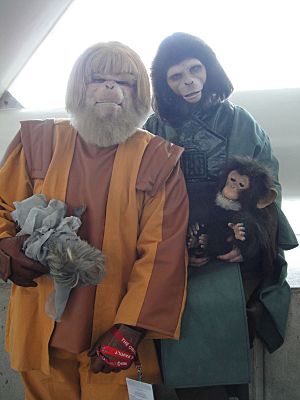Planet of the Apes facts for kids
Quick facts for kids Planet of the Apes |
|
|---|---|

Official franchise logo
|
|
| Creator | Pierre Boulle |
| Original work | La Planète des singes (1963) |
| Owner | 20th Century Studios |
| Print publications | |
| Books | List of books |
| Novels | La Planète des singes (1963) |
| Comics | List of comics |
| Films and television | |
| Films |
Original series
Remake
Reboot series
|
| Television series | Planet of the Apes (1974) |
| Animated series | Return to the Planet of the Apes (1975–1976) |
| Games | |
| Video games |
|
| Miscellaneous | |
| Character(s) | List of characters |
Planet of the Apes is a famous science fiction story series. It includes movies, books, TV shows, and comics. The story is about a world where humans and smart apes fight for control. The whole idea started with a French book from 1963 called La Planète des singes by Pierre Boulle.
The first movie, Planet of the Apes, came out in 1968. It was a huge hit! This movie led to many sequels, spin-offs, and other works. Arthur P. Jacobs produced the first five Apes movies. After he passed away, 20th Century Fox took over the series.
Four more movies followed the first one between 1970 and 1973. These were Beneath the Planet of the Apes, Escape from the Planet of the Apes, Conquest of the Planet of the Apes, and Battle for the Planet of the Apes. They were popular and led to a live-action TV show in 1974. An animated series followed in 1975.
Later, a new movie called Planet of the Apes was released in 2001. Then, a new series of movies began in 2011 with Rise of the Planet of the Apes. This was followed by Dawn of the Planet of the Apes in 2014 and War for the Planet of the Apes in 2017. In 2019, Disney bought 20th Century Fox. Disney then announced more movies in the new series. Kingdom of the Planet of the Apes is set to release in 2024.
The movies have earned over $2 billion worldwide. This is a lot more than their total cost of $567.5 million. The Planet of the Apes series also includes books, comics, video games, and toys. Many film experts have talked about how the series explores ideas about how different groups of people get along. It also touches on themes like the Cold War and animal rights. The series has inspired many other films, shows, and art. It has also influenced popular culture and even political discussions.
Contents
The Original Book
The whole Planet of the Apes story started with a book. It was written by French author Pierre Boulle in 1963. Boulle wrote the book after seeing gorillas at a zoo. Their human-like faces made him think about the connection between people and apes.
His book, La Planète des singes, was like old travel stories. It was especially like Gulliver's Travels, a funny story from the 1700s. Boulle used science fiction ideas to talk about human flaws. He also showed how people rely too much on technology. He called his style "social fantasy" instead of science fiction.
The book is a funny story about a French journalist named Ulysse Mérou. He travels to a far-off planet. There, humans cannot speak and are like animals. They are hunted and kept as slaves by smart apes. The apes have different jobs: gorillas are police, chimpanzees are scientists, and orangutans are politicians.
Ulysse finds out that humans used to rule the planet. But they became lazy, and the hard-working apes took over. The main message of the story is that human intelligence can get weaker. This can happen if people take it for granted. Boulle thought this book was a small work, but it became a bestseller. It was translated into English as Monkey Planet in the UK and Planet of the Apes in the US.
The First Movies
Pierre Boulle's book caught the eye of American film producer Arthur P. Jacobs. He was looking for stories to turn into movies. Jacobs bought the rights to the book right away.
Planet of the Apes (1968)
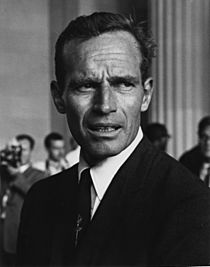
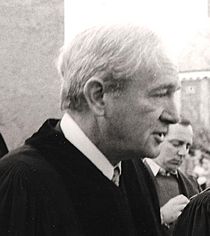
It took Jacobs over three years to get filmmakers interested. He hired Rod Serling, who created The Twilight Zone, to write the script. Serling's script added ideas about the Cold War. He also created a surprise ending. It showed that the planet was actually Earth in the future. Humans had destroyed themselves with nuclear war.
The movie was going to cost over $10 million, which was a lot back then. No studio wanted to take such a risk. But Jacobs and his partner Mort Abrahams kept trying. They finally convinced Charlton Heston to star. Heston then suggested Franklin J. Schaffner as the director. They made a short test film with Heston. This convinced 20th Century Fox that the movie could be a success.
Fox wanted to lower the budget to $5.81 million. So, they hired Michael Wilson to rewrite Serling's script. Wilson's script made the ape society simpler to save money on special effects. It changed much of the story but kept the Cold War themes and Serling's ending. John Chambers created the amazing ape makeup.
Heston played George Taylor, an astronaut from the 20th century. He travels to a strange planet where smart apes rule over quiet, simple humans. Kim Hunter and Roddy McDowall played the friendly chimpanzees, Zira and Cornelius. Linda Harrison played Nova, Taylor's love interest. Maurice Evans played the bad guy, Dr. Zaius, an orangutan.
The ending became very famous. Taylor finds a ruined Statue of Liberty. He then realizes he has been on Earth all along. This scene is one of the most iconic images from 1960s movies. Planet of the Apes came out on February 8, 1968. It was a huge hit with both critics and audiences. It made about $22 million, which was almost four times its cost. John Chambers won an honorary Oscar for his makeup effects. This was the first time a makeup artist received such an award. The movie's music and costume design also got Oscar nominations. Because it was so successful, Fox asked for a sequel.
Beneath the Planet of the Apes (1970)
Work on the sequel, Beneath the Planet of the Apes, began soon after the first movie. Paul Dehn was hired to write the script. He would become the main writer for the series. Charlton Heston did not want to be in a sequel. But he agreed to film a few scenes if his character died and his pay went to charity. Dehn changed the script to focus on a new character, Brent, played by James Franciscus.
Ted Post directed the movie. The studio cut the budget to $3.4 million, which made filming harder. The story follows Brent, an astronaut looking for Taylor. He finds Taylor held captive by underground human mutants. These mutants worship an old nuclear bomb. Kim Hunter, Maurice Evans, and Linda Harrison returned as Zira, Zaius, and Nova. David Watson played Cornelius because Roddy McDowall was busy.
The film opened on May 26, 1970. Critics did not like Beneath as much as the first movie. Many think it is one of the weaker Apes sequels. But it still made a lot of money, almost as much as the first film. Even though the movie ended with the planet being destroyed, Fox asked for another sequel.
Escape from the Planet of the Apes (1971)
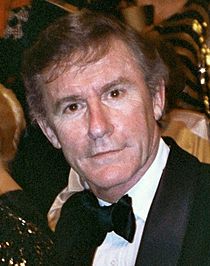
After Beneath made money, Arthur P. Jacobs asked Paul Dehn to write a new script. Dehn started working on Escape from the Planet of the Apes right away. Don Taylor was hired as the new director. Fox gave the movie a smaller budget of $2.5 million. This meant they had to film it very quickly.
To work with the budget and the ending of Beneath, the story went in a new direction. Zira (Kim Hunter) and Cornelius (Roddy McDowall) travel back in time to modern-day America. This reduced the need for expensive sets and ape makeup. At first, Zira and Cornelius are welcomed. But humans become afraid that their child will lead to apes ruling the world. This causes conflict.
The film focused more on themes of how different groups get along. This became a main idea for the rest of the series. The movie opened on May 21, 1971. Critics liked it. They started seeing the movies as parts of a bigger story. It also did well at the box office. Fox then ordered a third sequel.
Conquest of the Planet of the Apes (1972)
Because Escape was so popular, Fox ordered Conquest of the Planet of the Apes. But they gave it a low budget of $1.7 million. Paul Dehn returned as the writer. Producer Jacobs hired J. Lee Thompson to direct. Thompson and Dehn focused a lot on the theme of different groups fighting. This idea became central after being a smaller part in earlier films.
Dehn connected the apes to African-Americans. He based the story on real events like the 1966 Watts riots. Roddy McDowall played Caesar, the son of Cornelius. In the movie, Caesar leads an ape rebellion. This happens in a future where humans have made apes into slaves. The film opened on June 30, 1972. Reviews were mixed. But the ending allowed for another sequel. Conquest made enough money for Fox to order another film.
Battle for the Planet of the Apes (1973)
Fox approved Battle for the Planet of the Apes with the lowest budget of the series, $1.2 million. The filmmakers knew this would be the last movie in the original series. J. Lee Thompson returned as director. Paul Dehn started writing but had to leave due to illness. John William Corrington and Joyce Hooper Corrington finished the script.
Battle continued to focus on conflict between groups. But the Corringtons chose a more hopeful ending. This was likely because the studio wanted it. The movie follows Caesar after a big war that destroyed much of the planet. He leads the apes and their human subjects. He has to deal with attacks from human mutants and a coup attempt. Caesar tries to build a better society for both apes and humans.
McDowall returned as Caesar. Paul Williams played the orangutan Virgil. Austin Stoker played MacDonald. Claude Akins played the gorilla general Aldo. John Huston played the orangutan Lawgiver. The film opened on May 2, 1973. It made a profit but got bad reviews. Many critics think it is the weakest of the five original films.
The ending of the movie has been discussed a lot. It shows a statue of Caesar crying a single tear. This happens 700 years after the main events. The Lawgiver tells Caesar's story to ape and human children. Some people think the tear means joy. They believe the groups have stopped fighting, making a happy ending. Others think the tear means sadness. They believe conflict still exists, and the bad future from the first movies cannot be avoided.
TV Shows
Planet of the Apes TV Series

The Planet of the Apes movies were very popular on TV after their cinema runs. To use this success, Arthur P. Jacobs thought of a live-action TV series. He first had the idea in 1971. Jacobs passed away on June 27, 1973. After his death, Stan Hough became the producer for the TV show. CBS decided to air the series in 1974.
Ron Harper and James Naughton played two astronauts. They travel through time to a future where apes rule humans. Unlike the first movie, these humans can speak. Roddy McDowall returned as Galen, a chimpanzee who joins the astronauts. Booth Coleman played Councillor Zaius. Mark Lenard played General Urko. The show followed Virdon, Burke, and Galen as they looked for a way home. They also helped humans and apes and tried to avoid the authorities.
The show started on September 13, 1974. It had low ratings. The team thought this was because the stories were too similar. Also, there was not enough screen time for the apes. Because it cost a lot to make, CBS canceled the show after 14 episodes. The last episode aired on December 20, 1974.
In 1981, Fox re-edited 10 episodes into five TV movies. Each movie combined two episodes. Some even added new parts with McDowall as an older Galen.
Return to the Planet of the Apes Animated Series
In 1975, after the live-action TV show failed, NBC and 20th Century Fox made an animated series. It was called Return to the Planet of the Apes. Doug Wildey was in charge of most of the creative work. He had only seen the first two movies. So, his show focused on themes from those films. These included ideas about the Vietnam War and the Cold War.
The story is about three astronauts. They accidentally travel to Earth's far future. They find three groups of beings there. There are quiet humans living in desert caves. There are underground humans like the mutants from Beneath. And there are civilized apes who control the humans. The astronauts get involved in the planet's problems. They try to defend the humans from an ape invasion. The show had characters like Nova, General Urko, Zira, Cornelius, and Dr. Zaius. NBC aired 13 episodes between September 6 and November 29, 1975. The show did not get very high ratings.
Newer Movies
Planet of the Apes (2001)

In 1999, Fox hired William Broyles, Jr. to write a new script. Fox wanted the movie out by July 2001. Director Tim Burton was interested in making a "re-imagining" of Planet of the Apes. Burton found the movie hard to make because of Fox's tight schedule. The studio gave the film $100 million. Broyles' script had to be changed to lower costs. The rushed schedule meant all parts of making the movie were hurried.
The movie stars Mark Wahlberg as astronaut Leo Davidson. He accidentally travels through a wormhole to a planet where talking apes enslave humans. Leo leads a human revolt. He changes ape society by finding out that the apes came from normal Earth primates. These primates had traveled with his mission years before. Helena Bonham Carter played the chimpanzee Ari. Tim Roth played the human-hating chimpanzee General Thade.
The film got mixed reviews. Most critics felt it was not as good as the original. Many did not like the confusing plot and twist ending. But many praised the special effects. The movie did well at the box office, making $362 million worldwide. Fox hoped for a sequel. But the difficult production made Burton not want to be part of it. The movie did not create enough interest for a follow-up.
Rise of the Planet of the Apes (2011)
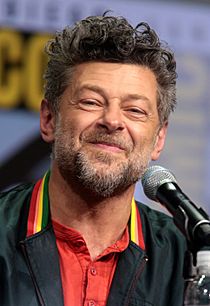
In 2005, writers Rick Jaffa and Amanda Silver came up with an idea for a new Planet of the Apes movie. It was called Rise of the Planet of the Apes. They were inspired by news about apes raised like humans. They also learned about new discoveries in genetics. Jaffa thought of a movie about a smart chimpanzee raised by humans. They suggested this to Fox to restart the Apes series. It would tell the origin story of Caesar, a main ape character.
Fox liked the idea but it took five years to develop. In 2010, producers Peter Chernin and Dylan Clark helped move the film forward. They kept Jaffa and Silver as writers. In the final script, Caesar becomes very smart from a special drug. A scientist named Will Rodman raises him. After being put in an ape sanctuary, Caesar uses his smarts to start a rebellion.
The movie connects to other films in the series. It is seen as a prequel or "origin story" to the original Planet of the Apes movie. It is also a reboot of the series. Rupert Wyatt directed the film. To make the apes look real, they used motion-capture acting. This was done with Weta Digital. James Franco played Will Rodman. Andy Serkis, a famous motion-capture actor, played Caesar.
Rise came out on August 5, 2011. Critics loved it, especially the visual effects and Serkis's acting. It was a huge box office hit, making $482 million worldwide. This was more than five times its $93 million cost. Weta's special effects won awards and an Oscar nomination. Serkis's acting was so good that Fox tried to get him an Oscar nomination. After the movie's success, Fox immediately planned a sequel.
Dawn of the Planet of the Apes (2014)

Producers Peter Chernin and Dylan Clark started planning Dawn of the Planet of the Apes right after Rise came out in 2011. Fox gave it a budget of $40 million. Rick Jaffa and Amanda Silver wrote the script and produced. Andy Serkis quickly signed on to play Caesar again. Director Rupert Wyatt left the project due to scheduling issues. Matt Reeves took over as director.
The movie is set 10 years after Rise. A "simian flu" (a side effect of the drug that made apes smart) has killed most humans. Caesar tries to keep peace. But his ape community gets into violent fights with nearby human survivors. Weta Digital again did the special effects. They used real sets, digital backgrounds, and motion-capture for the apes. The main human characters were played by Jason Clarke, Keri Russell, and Gary Oldman.
The film was released on July 11, 2014. Critics loved it. They thought it was a great follow-up to Rise. They praised the story and the amazing special effects. It also did very well at the box office, making $711 million worldwide. Its special effects won several awards and an Oscar nomination.
War for the Planet of the Apes (2017)
Fox was so confident in Dawn of the Planet of the Apes that they started planning the next movie months before Dawn was released. After seeing Matt Reeves' version of Dawn, Fox hired him to direct again. He also wrote the script with Mark Bomback. Peter Chernin, Dylan Clark, Rick Jaffa, and Amanda Silver were producers again. War for the Planet of the Apes had a $150 million budget and was released on July 14, 2017.
The movie shows apes and humans in a war. Caesar and his followers look for a human military leader called the Colonel. They also search for a new home. Serkis returned as Caesar. Woody Harrelson played the bad guy, the Colonel. Steve Zahn played Bad Ape. The film received wide praise from critics. They loved the effects and the story. They felt it was a great ending to Caesar's story. It earned $491 million at the worldwide box office.
Kingdom of the Planet of the Apes (2024)
In October 2016, there were talks about a fourth movie in the new series. Before War came out in 2017, director Matt Reeves said he wanted to make more Apes films. Steve Zahn, who played Bad Ape, had even set up a story for future movies. In April 2019, after Disney bought 20th Century Fox, Disney said more Planet of the Apes films were being made.
In August 2019, Disney said future movies would be in the same world as Rise of the Planet of the Apes. In February 2020, Wes Ball was announced as the director. He said the story would happen after War for the Planet of the Apes. It would continue to follow "Caesar's legacy." In May 2020, Josh Friedman joined as a writer. Rick Jaffa and Amanda Silver returned as producers. Production for Kingdom of the Planet of the Apes began in October 2022 in Sydney, Australia.
Other Fun Stuff
Books
Pierre Boulle's book was translated and printed many times. All four sequels to the original movie also had books written about them. These were written by famous science fiction authors. Michael Avallone wrote the book for Beneath the Planet of the Apes in 1970. Jerry Pournelle wrote the Escape from the Planet of the Apes book in 1974. John Jakes wrote the Conquest of the Planet of the Apes book in 1972. David Gerrold wrote the Battle for the Planet of the Apes book in 1973. Books were also made for the live-action and animated TV shows.
Comics
Planet of the Apes comics have been published since 1968. One of the most famous was Marvel Comics' Planet of the Apes magazine. It was published from 1974 to 1977. This black-and-white series had stories based on the movies. It also had new Apes stories, news, and interviews. It became one of Marvel's most popular titles.
In 1990, Malibu Comics started a new Planet of the Apes comic. The first issue sold 40,000 copies. This was a record for black-and-white comics. It led to a successful run of 24 issues. The series followed Caesar's grandson, Alexander. He tried to rule the ape world. Malibu also published other short comic series and single comics.
Gold Key Comics, Dark Horse Comics, and Boom! Studios have also made Planet of the Apes comic books. Boom! even made comics that crossed over with other stories. These included Star Trek/Planet of the Apes: The Primate Directive and a King Kong story. In 2018, Boom! released a graphic novel. It was based on Rod Serling's original script for the 1968 film.
Toys and Merchandise
The Planet of the Apes series, especially the TV shows, led to many toys and products. In the 1970s, Fox allowed about 60 companies to make 300 different Apes products. These included action figures, playsets, coloring books, trading cards, toy weapons, and costumes. This amount of merchandise was unusual back then. The success of Apes toys may have inspired how movies and TV shows sell products today.
The action figures, sold by Mego starting in 1973, were the first toys made for movies. They were very popular. They inspired other action figure series based on popular stories. Some children even played "apes-vs.-humans" games. These games were like the conflicts in the series. With the newer movies, Fox allowed companies to make new Apes toys. These included detailed action figures of new and old characters for collectors.
Video Games
In 1983, 20th Century Fox Videogames made a Planet of the Apes game for the Atari 2600. It was the first computer game based on the series. But the game was still being made when Fox closed its game division. This happened during the video game crash of 1983. The game was thought to be lost until 2002. Collectors found a test version of it. Independent designers finished and released the game as Revenge of the Apes in 2003. In the game, you play as Taylor. You fight apes across different levels to reach the Statue of Liberty.
A video game based on the series did not come out until 2001. Fox Interactive started making a Planet of the Apes game in 1998. It was for PC and PlayStation. It was meant to go with the new movie being planned. Fox and developer Visiware continued with the game even when the movie was delayed. They made their own story based on the book and original films. The game is an action-adventure where players control an astronaut. He explores a future Earth ruled by apes. The game was released on September 20, 2001. It got mostly negative reviews.
In 2014, Fox worked with Ndemic Creations on an update for the mobile game Plague Inc.. It was themed after Dawn of the Planet of the Apes. Players create and spread a "simian flu" virus. They try to get rid of humans while helping apes survive. In 2017, Fox ordered an adventure game for War for the Planet of the Apes. It was called Planet of the Apes: Last Frontier. Andy Serkis's company worked on the game. Serkis also did motion capture for it. It was released on PlayStation 4 on November 21, 2017. It got mixed reviews. In 2018, Fox's virtual reality team made a VR first-person shooter game. It was called Crisis on the Planet of the Apes VR. You play as a chimpanzee trying to escape a human prison. It was released on PC and PlayStation 4.
How Planet of the Apes Changed Things
Planet of the Apes stayed popular long after the original movies and TV shows ended. Fans kept their interest through comics and science fiction conventions. The series was so popular that some conventions in the 1970s were just for ape-related films. The special ape costumes were used for live appearances. Musicians and TV hosts wore them. In the 1970s, fans Bill Blake and Paula Crist made Cornelius and Zira costumes. They were so good that Fox let them play the characters at events.
The movies got high ratings when they aired on TV. Different channels showed them together in marathons later on. The live-action TV series was even re-edited into five TV movies in 1981.
Planet of the Apes had a big impact on later popular media. The series' success with sequels, spin-offs, and merchandise created a new way of making movies in Hollywood. Studios started making films specifically to create big media franchises. The series also influenced other films and TV shows in the 1970s and 1980s. These used science fiction to explore how different groups of people get along.
Interest in the series grew again in the 1990s. This was when plans for new movies and other media started. Fans created new clubs, websites, and fan magazines. Companies started making new Apes products. These included clothes, toys, and costumes.
Artists in different fields have used or been inspired by the series. Planet of the Apes has appeared in songs, other movies, and comedy shows. The Simpsons has made fun of the series many times. One episode shows an actor starring in a musical called Stop the Planet of the Apes, I Want to Get Off!
The series has even affected politics. Different groups have used its ideas and images in their discussions. The phrase "planet of the apes" has been used to describe big changes in society. Some groups use it to talk about how they feel about other groups gaining power. The final image of the ruined Statue of Liberty has become a common political symbol. For example, Greenpeace used it in an ad against nuclear testing. The series' themes have been used in talks about 1960s culture, city problems, wars, and gun violence.
List of Films
| Number | Title | Release date | Director | Continuity |
|---|---|---|---|---|
| 1 | Planet of the Apes | April 3, 1968 | Franklin J. Schaffner | Original series |
| 2 | Beneath the Planet of the Apes | May 27, 1970 | Ted Post | |
| 3 | Escape from the Planet of the Apes | May 21, 1971 | Don Taylor | |
| 4 | Conquest of the Planet of the Apes | June 29, 1972 | J. Lee Thompson | |
| 5 | Battle for the Planet of the Apes | June 15, 1973 | ||
| 6 | Planet of the Apes | July 27, 2001 | Tim Burton | Remake |
| 7 | Rise of the Planet of the Apes | August 5, 2011 | Rupert Wyatt | Reboot series |
| 8 | Dawn of the Planet of the Apes | July 11, 2014 | Matt Reeves | |
| 9 | War for the Planet of the Apes | July 14, 2017 | ||
| 10 | Kingdom of the Planet of the Apes | May 24, 2024 | Wes Ball | |
Cast and Crew
Cast
This section includes characters who have appeared in primary roles in the nine films to date.
- An empty, dark grey cell indicates the character was not in the film.
- A indicates an appearance through archival footage or audio.
- P indicates an appearance in onscreen photographs.
- U indicates an uncredited appearance.
- V indicates a voice-only role.
| Character | Original series | Remake | Reboot series | ||||||||
|---|---|---|---|---|---|---|---|---|---|---|---|
| Planet of the Apes | Beneath the Planet of the Apes | Escape from the Planet of the Apes | Conquest of the Planet of the Apes | Battle for the Planet of the Apes | Planet of the Apes | Rise of the Planet of the Apes | Dawn of the Planet of the Apes | War for the Planet of the Apes | Kingdom of the Planet of the Apes | ||
| 1968 | 1970 | 1971 | 1972 | 1973 | 2001 | 2011 | 2014 | 2017 | 2024 | ||
Apes |
|||||||||||
| Dr. Cornelius | Roddy McDowall | David Watson | Roddy McDowall | Roddy McDowall | Roddy McDowall | ''Infant'' | Devyn Dalton | Owen Teague | |||
| Dr. Zira | Kim Hunter | Kim Hunter | |||||||||
| Dr. Zaius | Maurice Evans | Charlton Heston | |||||||||
| Dr. Honorious | James Daly | ||||||||||
| Dr. Maximus | Woodrow Parfrey | ||||||||||
| President of the Assembly | James Whitmore | ||||||||||
| Lucius | Lou Wagner | ||||||||||
| General Ursus | James Gregory | ||||||||||
| Minister | Thomas Gomez | ||||||||||
| Dr. Milo | Sal Mineo | ||||||||||
| Caesar | Walker Edmiston | Roddy McDowall | Andy Serkis | ||||||||
| Lisa | Natalie Trundy | ||||||||||
| General Aldo | Claude Akins | ||||||||||
| Virgil | Paul Williams | ||||||||||
| The Lawgiver | John Huston | ||||||||||
| Mandemus | Lew Ayres | ||||||||||
| Cornelius II | Bobby Porter | ''Infant'' | Devyn Dalton | Owen Teague | |||||||
| Ari | Helena Bonham Carter | ||||||||||
| General Thade | Tim Roth | ||||||||||
| Colonel Attar | Michael Clarke Duncan | ||||||||||
| Limbo | Paul Giamatti | ||||||||||
| Senator Sandar | David Warner | ||||||||||
| Nova | Lisa Marie | ||||||||||
| Senator Nado | Glenn Shadix | ||||||||||
| General Krull | Cary-Hiroyuki Tagawa | ||||||||||
| Rocket | Terry Notary | ||||||||||
| Maurice | Karin Konoval | ||||||||||
| Cornelia | Devyn Dalton | Judy Greer | |||||||||
| Koba | Christopher Gordon | Toby Kebbell | |||||||||
| Blue Eyes | Nick Thurston | Max Lloyd-Jones | |||||||||
| Ash | Doc Shaw | ||||||||||
| Grey | Lee Ross | ||||||||||
| Bad Ape | Steve Zahn | ||||||||||
| Red | Ty Olsson | ||||||||||
| Lake | Sara Canning | ||||||||||
| Luca | Michael Adamthwaite | ||||||||||
| Winter | Aleks Paunovic | ||||||||||
Humans |
|||||||||||
| George Taylor | Charlton Heston | Charlton Heston | |||||||||
| Nova | Linda Harrison | Amiah Miller | TBA | ||||||||
| Landon | Robert Gunner | Robert Gunner | Brian Cox | ||||||||
| Dodge | Jeff Burton | ||||||||||
| Stewart | Dianne Stanley | ||||||||||
| Brent | James Franciscus | ||||||||||
| Mendez XXVI | Paul Richards | ||||||||||
| Albina | Natalie Trundy | ||||||||||
| Negro | Don Pedro Colley | ||||||||||
| Caspay | Jeff Corey | ||||||||||
| Fat Man | Victor Buono | ||||||||||
| Verger | Gregory Sierra | ||||||||||
| Skipper | Tod Andrews | ||||||||||
| Dr. Lewis Dixon | Bradford Dillman | ||||||||||
| Dr. Stephanie "Stevie" Branton | Natalie Trundy | ||||||||||
| Dr. Otto Hasslein | Eric Braeden | Eric Braeden | |||||||||
| Armando | Ricardo Montalbán | ||||||||||
| Governor Breck | Don Murray | ||||||||||
| MacDonald | Hari Rhodes | Jason Clarke | |||||||||
| Kolp | Severn Darden | ||||||||||
| MacDonald | Austin Stoker | ||||||||||
| Mutant Captain | Richard Eastham | ||||||||||
| Mendez | Paul Stevens | ||||||||||
| Alma | France Nuyen | ||||||||||
| Jake | Michael Stearns | ||||||||||
| Abe the Teacher | Noah Keen | ||||||||||
| Doctor | Heather Lowe | ||||||||||
| Leo Davidson | Mark Wahlberg | ||||||||||
| Grace Alexander | Anne Ramsay | ||||||||||
| Maria Cooper | Andrea Grano | ||||||||||
| Frank Santos | Michael Jace | ||||||||||
| Daena | Estella Warren | ||||||||||
| Birn | Luke Eberl | ||||||||||
| Bon | Freda Foh Shen | ||||||||||
| Karubi | Kris Kristofferson | ||||||||||
| Gunnar | Evan Parke | ||||||||||
| Tival | Erick Avari | ||||||||||
| Karl Vasich | Chris Ellis | ||||||||||
| Will Rodman | James Franco | James Franco | |||||||||
| Caroline Aranha | Freida Pinto | ||||||||||
| Steven Jacobs | David Oyelowo | ||||||||||
| Charles Rodman | John Lithgow | ||||||||||
| Dodge Landon | Tom Felton | ||||||||||
| Douglas Hunsiker | David Hewlett | ||||||||||
| Robert Franklin | Tyler Labine | ||||||||||
| Dreyfus | Gary Oldman | ||||||||||
| Ellie MacDonald | Keri Russell | ||||||||||
| Alexander MacDonald | Kodi Smit-McPhee | ||||||||||
| Carver | Kirk Acevedo | ||||||||||
| Werner | Jocko Sims | ||||||||||
| McVeigh | Kevin Rankin | ||||||||||
| Finney | Keir O'Donnell | ||||||||||
| Colonel J. Wesley McCullough | Woody Harrelson | ||||||||||
| Preacher | Gabriel Chavarria | ||||||||||
| Captain Rod Wilson | Roger Cross | ||||||||||
| Lang | Mercedes De La Zerda | ||||||||||
| Boyle | Chad Rook | ||||||||||
| rowspan="6" TBA | Freya Allan | ||||||||||
| Peter Macon | |||||||||||
| Eka Darville | |||||||||||
| Kevin Durand | |||||||||||
| Dichen Lachman | |||||||||||
| William H. Macy | |||||||||||
Crew
| Crew/detail | Original series | Remake | Reboot series | |||||||
|---|---|---|---|---|---|---|---|---|---|---|
| Planet of the Apes | Beneath the Planet of the Apes | Escape from the Planet of the Apes | Conquest of the Planet of the Apes | Battle for the Planet of the Apes | Planet of the Apes | Rise of the Planet of the Apes | Dawn of the Planet of the Apes | War for the Planet of the Apes | Kingdom of the Planet of the Apes | |
| 1968 | 1970 | 1971 | 1972 | 1973 | 2001 | 2011 | 2014 | 2017 | 2024 | |
| Director | Franklin J. Schaffner | Ted Post | Don Taylor | J. Lee Thompson | Tim Burton | Rupert Wyatt | Matt Reeves | Wes Ball | ||
| Producer(s) | Arthur P. Jacobs | Richard D. Zanuck | Peter Chernin, Dylan Clark, Rick Jaffa and Amanda Silver | Joe Hartwick Jr., Rick Jaffa, Amanda Silver, Jason Reed | ||||||
| Story by | Michael Wilson and Rod Serling | Paul Dehn and Mort Abrahams | Paul Dehn | Paul Dehn | William Broyles Jr., Lawrence Konner and Mark Rosenthal | Rick Jaffa and Amanda Silver | Mark Bomback, Rick Jaffa and Amanda Silver | Mark Bomback and Matt Reeves | Josh Friedman, Rick Jaffa, Amanda Silver and Patrick Aison | |
| Screenwriter(s) | Paul Dehn | John William Corrington and Joyce Hooper Corrington | ||||||||
| Composer | Jerry Goldsmith | Leonard Rosenman | Jerry Goldsmith | Tom Scott | Leonard Rosenman | Danny Elfman | Patrick Doyle | Michael Giacchino | ||
| Cinematographer | Leon Shamroy | Milton Krasner | Joseph Biroc | Bruce Surtees | Richard H. Kline | Philippe Rousselot | Andrew Lesnie | Michael Seresin | Gyula Pados | |
| Editor(s) | Hugh S. Fowler | Marion Rothman | Alan L. Jaggs and Marjorie Fowler | Alan L. Jaggs and John C. Horger | Chris Lebenzon and Joel Negron | Conrad Buff and Mark Goldblatt | Stan Salfas and William Hoy | |||
See also
 In Spanish: El planeta de los simios (franquicia) para niños
In Spanish: El planeta de los simios (franquicia) para niños



